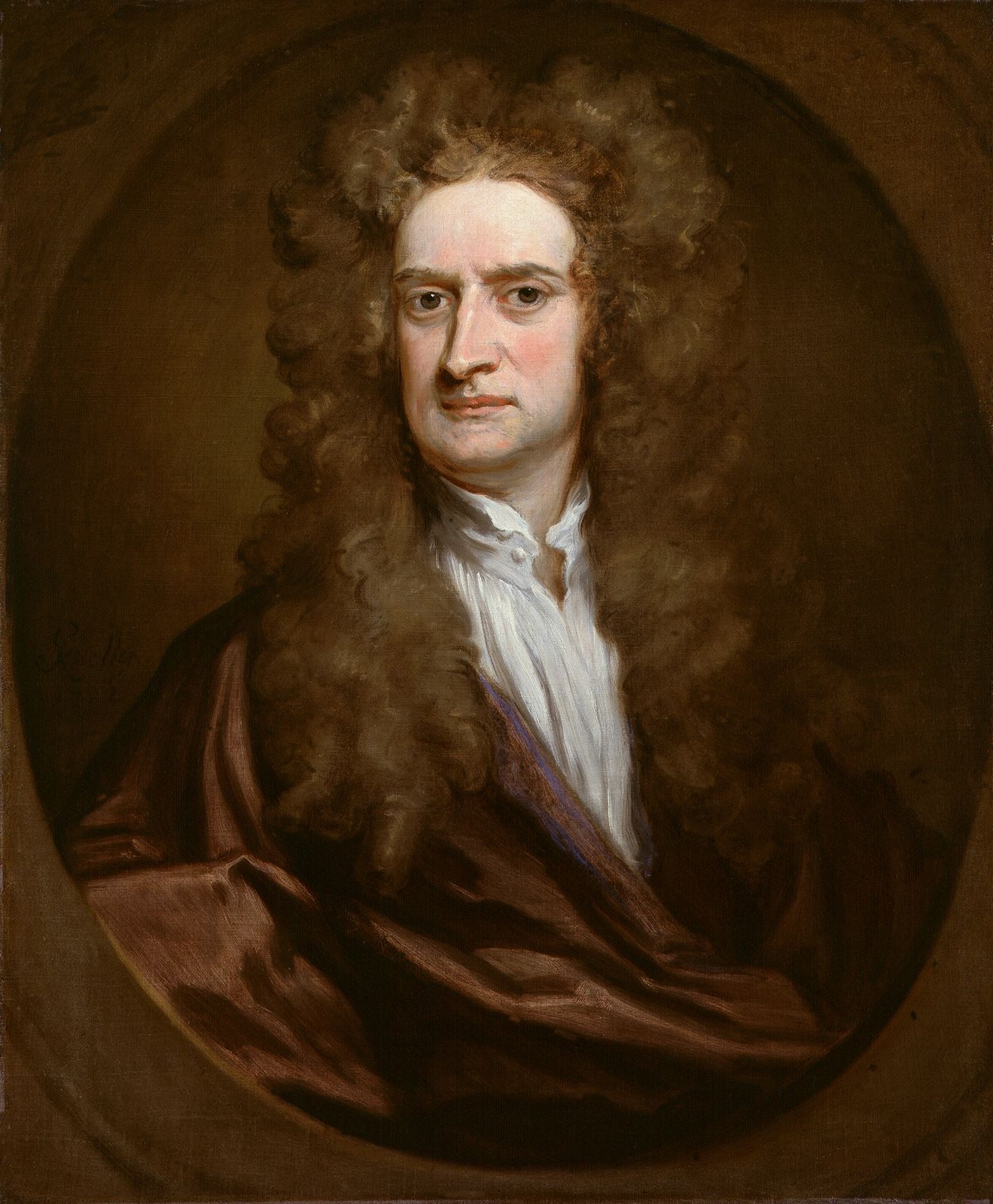Few names in the history of science carry as much weight as Sir Isaac Newton. He was not just a scientist but a visionary who changed how humanity understands the universe. Born in 1642, in the same year that Galileo Galilei died, Newton lived during a time of great upheaval in science—a period historians call the Scientific Revolution. He was a mathematician, physicist, astronomer, philosopher, and even a theologian, whose ideas became the foundation of modern science.
Newton’s work continues to influence nearly every aspect of life, from the way satellites orbit Earth to the engineering principles behind bridges and skyscrapers. He did not just answer questions—he redefined how questions should be asked. His mind bridged the gap between the medieval worldview and the modern scientific age.
In this article, we will explore ten of Newton’s most important contributions, tracing the profound ways his ideas shaped the world. Each of these contributions reveals the genius of a man whose curiosity and intellect continue to illuminate the path of discovery centuries later.
1. The Laws of Motion
Newton’s Three Laws of Motion are perhaps his most famous contribution and remain the bedrock of classical physics. These laws explain how objects move and interact with forces, concepts so fundamental that they are still taught to every physics student today.
- First Law (Law of Inertia): An object at rest stays at rest, and an object in motion continues in motion unless acted upon by an external force. This idea was revolutionary because it overturned the Aristotelian belief that a force was always required to keep something moving.
- Second Law: Force equals mass times acceleration (F = ma). This law provides the precise relationship between force, mass, and acceleration, allowing scientists to predict motion in measurable terms.
- Third Law: For every action, there is an equal and opposite reaction. This explains phenomena as simple as walking (your foot pushes back on the ground, the ground pushes you forward) and as complex as rocket propulsion.
These laws transformed physics from a collection of observations into a predictive science. They apply everywhere—from the fall of an apple to the flight of a spacecraft.
2. Universal Law of Gravitation
While others before Newton speculated about gravity, it was he who gave it a precise, mathematical form. His Law of Universal Gravitation states that every particle of matter in the universe attracts every other particle with a force proportional to their masses and inversely proportional to the square of the distance between them.
This simple formula explained why apples fall to the ground, why the Moon orbits Earth, and why planets revolve around the Sun. It united celestial mechanics with earthly physics, showing that the same law governs both the heavens and Earth.
Newton’s insight shattered the divide between earthly and celestial realms, a divide that had persisted since ancient times. By proving that gravity was universal, he laid the foundation for modern astronomy, astrophysics, and space exploration.
3. Development of Calculus
To describe motion and change, Newton developed a new branch of mathematics: calculus. Independently and nearly simultaneously, the German mathematician Gottfried Wilhelm Leibniz also created calculus, leading to one of the most famous disputes in scientific history.
Regardless of priority, Newton’s calculus was essential for his scientific breakthroughs. It allowed him to describe instantaneous rates of change and to calculate areas under curves—tools that were necessary for formulating his laws of motion and gravitation.
Today, calculus is indispensable. It underpins physics, engineering, computer science, economics, and even biology. Every time scientists model population growth, predict climate change, or design a rocket, they rely on the mathematical framework Newton helped pioneer.
4. The Nature of Light and Optics
Newton made groundbreaking contributions to the study of light. Through a series of experiments, he demonstrated that white light is not pure but composed of many colors. By passing light through a prism, he showed that white light splits into the spectrum of colors—red, orange, yellow, green, blue, indigo, and violet.
He further proved that these colors could recombine to form white light again, showing that color is an intrinsic property of light, not a distortion created by glass lenses, as many previously believed.
Newton also studied the behavior of light in reflection and refraction. He proposed the corpuscular theory of light, suggesting that light consists of particles. While later replaced by wave and quantum theories, his ideas set the stage for centuries of debate and discovery in optics.
His work revolutionized optics and vision science, influencing everything from the design of microscopes and telescopes to our understanding of how human eyes perceive color.
5. The Reflecting Telescope
Frustrated by the limitations of refracting telescopes, which used glass lenses that distorted light and created color fringes, Newton invented a new type of telescope: the reflecting telescope.
Instead of lenses, Newton used mirrors to gather and focus light. This design eliminated chromatic aberration, a problem where different colors focus at different points, blurring images. Newton’s telescope produced clearer, sharper images than anything available at the time.
Today, nearly all major astronomical telescopes—including the Hubble Space Telescope and the James Webb Space Telescope—are based on Newton’s reflecting design. This invention gave humanity sharper eyes to explore the cosmos, opening windows to galaxies, nebulae, and the very origins of the universe.
6. Principia Mathematica
Newton’s magnum opus, Philosophiæ Naturalis Principia Mathematica (often called the Principia), published in 1687, is one of the most important books in the history of science.
In it, Newton presented his laws of motion and universal gravitation, supported by rigorous mathematics. The Principia provided not just theories but predictive power: it explained the motions of planets, comets, tides, and projectiles on Earth with stunning accuracy.
This book marked the birth of classical mechanics and established the scientific method of combining theory with mathematical proof and experimental evidence. The Principia transformed physics into a true science, setting the stage for centuries of discovery.
7. Binomial Theorem and Mathematical Advancements
Beyond calculus, Newton made significant contributions to pure mathematics. His work on the generalized binomial theorem allowed him to expand expressions to any power, including fractions and irrational numbers.
This extension of algebra was groundbreaking because it allowed mathematicians to handle infinite series and to work with problems previously considered unsolvable. Newton’s methods anticipated many tools later developed in mathematical analysis.
His contributions laid essential groundwork for modern algebra, number theory, and advanced mathematics, demonstrating his versatility as both a physicist and mathematician.
8. Laws of Cooling and Thermodynamics
Newton also ventured into the study of heat. He formulated what became known as Newton’s Law of Cooling, which states that the rate at which an object changes temperature is proportional to the difference between its temperature and the surrounding environment.
This law became one of the earliest steps toward the field of thermodynamics, which would later be developed by scientists such as Carnot, Joule, and Clausius. It remains applicable in diverse fields today, from forensic science (estimating time of death from body cooling) to engineering and climate studies.
Newton’s insight showed his extraordinary ability to observe everyday phenomena and describe them in universal, mathematical terms.
9. Contributions to Astronomy
Newton’s gravitational theory revolutionized astronomy. By applying his laws of motion and gravity, he was able to explain Kepler’s laws of planetary motion, showing that planets orbit the Sun in ellipses due to gravitational forces.
He also accurately predicted the return of Halley’s Comet, in collaboration with his friend Edmond Halley. This prediction provided one of the first strong confirmations of Newton’s theories and demonstrated that comets, once thought to be unpredictable omens, follow precise, calculable paths.
Newton’s work in astronomy bridged observation and theory, turning the heavens into a knowable system governed by universal laws rather than mystical forces.
10. Legacy and Philosophical Impact
Newton’s contributions were not limited to individual discoveries—they reshaped how humanity thinks about nature itself. He introduced the idea that the universe operates according to consistent, discoverable laws. This vision replaced centuries of reliance on mystical explanations and divine intervention in natural phenomena.
His work inspired the Age of Enlightenment, influencing not only science but also philosophy, politics, and culture. Thinkers like Voltaire, Kant, and Jefferson admired Newton as a symbol of human reason’s power. His ideas echoed through centuries, laying the groundwork for modern technology, engineering, and space exploration.
Newton’s legacy extends beyond equations and experiments. He showed the world that with logic, observation, and mathematics, the universe itself could be understood—a radical and liberating idea that continues to shape our modern worldview.
Conclusion
Isaac Newton was more than a scientist; he was a revolution in human thought. His contributions—ranging from the laws of motion and gravity to the invention of the reflecting telescope—reshaped science and opened humanity’s eyes to the workings of nature.
Though centuries have passed, Newton’s influence remains everywhere: in the satellites orbiting Earth, in the engines that power our machines, in the mathematics that describes economies and ecosystems, and in the scientific spirit that drives exploration.
He once humbly said, “If I have seen further, it is by standing on the shoulders of giants.” Yet to the world, Newton himself became the giant, a towering figure whose genius still casts light across the centuries. His ten most important contributions remind us of the boundless power of human curiosity—and the lasting legacy of one of the greatest minds who ever lived.






